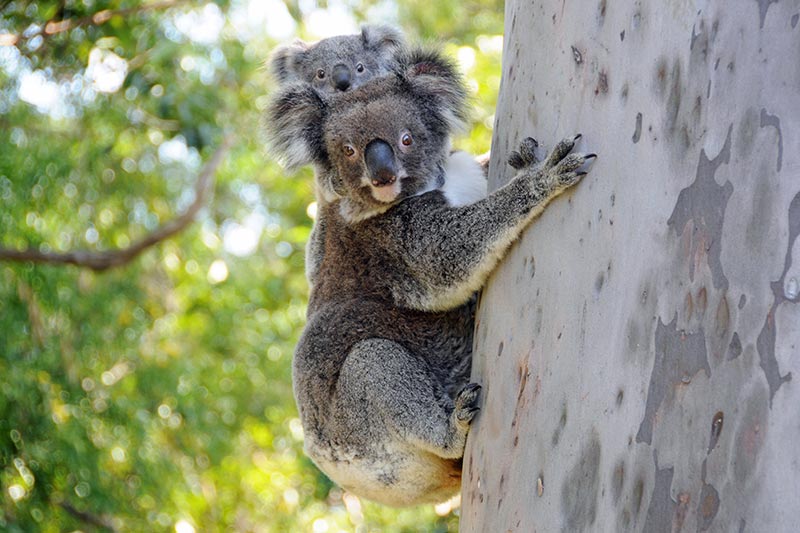We offer a complete range of services for arborist reports and flora and fauna assessments. Our integrated approach enables cost-effective solutions as there is overlap between the two reports. Our arborists and ecologists collaborate closely to produce both reports, ensuring a streamlined and efficient process for our clients.
A Flora and Fauna Assessment Report (FFA) is a specialized consultant report often mandated as part of a Development Application (DA). It identifies native vegetation communities, threatened species, and associated habitats on a property, evaluating the potential impacts of a proposed development on these ecological features. The assessment may also involve a Test of Significance (5-part Test) to ascertain if the development could significantly affect threatened species, ecological communities, or their habitats.
While these reports may have different names, they share the same objective as a Flora and Fauna Report. They all evaluate the potential impacts of your proposed Development Application (DA) on flora, fauna, and biodiversity listed as 'threatened' under the New South Wales Biodiversity Conservation Act 2016 (previously known as the NSW Threatened Species Conservation Act 1995).
The necessity for a Flora and Fauna Report stems from the NSW Environmental Planning and Assessment Act 1979 (EP&A Act), which requires Councils to thoroughly examine the impact of a development on native vegetation, threatened species, populations, or communities. This entails an impact assessment, commonly known as the 'Five-part Test of Significance' or '5 Part Test,' in accordance with the NSW Biodiversity Conservation Act 2016 (BC Act). You might require a Flora and Fauna Report for Development Applications (DAs) involving demolition, construction, tree removal, subdivision, or dam removal.
To ascertain whether your proposed Development Application (DA) necessitates a Flora and Fauna Report, reach out to your local council's planning department or send us an email. Many councils outline guidelines for these reports in their Development Control Plans (DCP) and generally mandate licensed and qualified Ecological Consultants, like Arbor Express, to prepare them.
Councils usually require a qualified individual to prepare the report, including:
All of Arbor Express Ecologists staff meet these criteria and are fully qualified to conduct Flora and Fauna Assessment Reports in New South Wales.
A Vegetation Management Plan (VMP) is a document outlining the ongoing management needs of native vegetation, encompassing trees, shrubs, and ground cover, within a proposed development site.
Numerous Sydney Councils and various Regional NSW Councils mandate developers to include a Vegetation Management Plan (VMP) as part of the Development Application (DA) process. Property subdivisions, building construction, extensions, and rezoning often require a VMP, particularly if the development is near natural drainage lines. It's crucial to recognize that preparing a VMP is a legal requirement under the NSW Water Management Act 2000.
A VMP is occasionally known by other names, such as Biodiversity Management Plans, Bushland Management Plans, Conservation Management Plans, or Vegetation Rehabilitation Plans.
The NSW Department of Water mandates a VMP from individuals engaging in controlled activities like development, construction, or earthworks on "waterfront land." This category encompasses not only ocean-view properties but also any properties in proximity to natural water bodies, such as lakes, rivers, or mapped drainage lines. Preparing a VMP remains a legal requirement under the NSW Water Management Act 2000.
A Biodiversity Development Assessment Report (BDAR) is an official document that details how a developer or their representative plans to address and mitigate the impacts of a proposed development on native vegetation and biodiversity in accordance with the New South Wales Biodiversity Conservation Act 2016 and the Biodiversity Regulation 2017.
During a development application (DA) or state significant development (SSD) process under Part 4 of the Environmental Planning and Assessment Act 1979, a proponent may require the services of an Accredited Biodiversity Assessor, such as an Ecologist from Arbor Express, to prepare a BDAR. This report outlines strategies to avoid, minimize, and offset potential impacts on native vegetation and biodiversity.
The Biodiversity Offsets Scheme (BOS) Entry Test (BOSET) is utilized to determine whether it's necessary to engage an Accredited Assessor Ecologist Consultant for applying the Biodiversity Assessment Method (BAM) to assess proposal impacts. This applies to local developments submitted to councils and clearing activities in urban and environmentally designated areas (under the State Environmental Planning Policy (Vegetation in Non-Rural Areas) 2017) that do not require development consent.
For developments falling under Part 4 of the Environmental Planning and Assessment Act 1979, and State Significant Developments (SSDs), the Biodiversity Conservation Regulation 2017 sets threshold levels that trigger the Biodiversity Offsets Scheme. These thresholds take into account the area of native vegetation affected or whether the impacts occur in an area mapped by the Biodiversity Values Map published by the Minister for the Environment.
For "activities" and State Significant Developments (SSDs) assessed under Part 5 of the Environmental Planning and Assessment Act 1979, the Biodiversity Conservation Regulation 2017 establishes thresholds based on the area of native vegetation affected or the anticipated significant impact on threatened species, populations, or ecological communities listed under the Biodiversity Conservation Act, as determined through a test of significance.
To find out if your property is included on the Biodiversity Value Map, you can contact Arbor Express.
